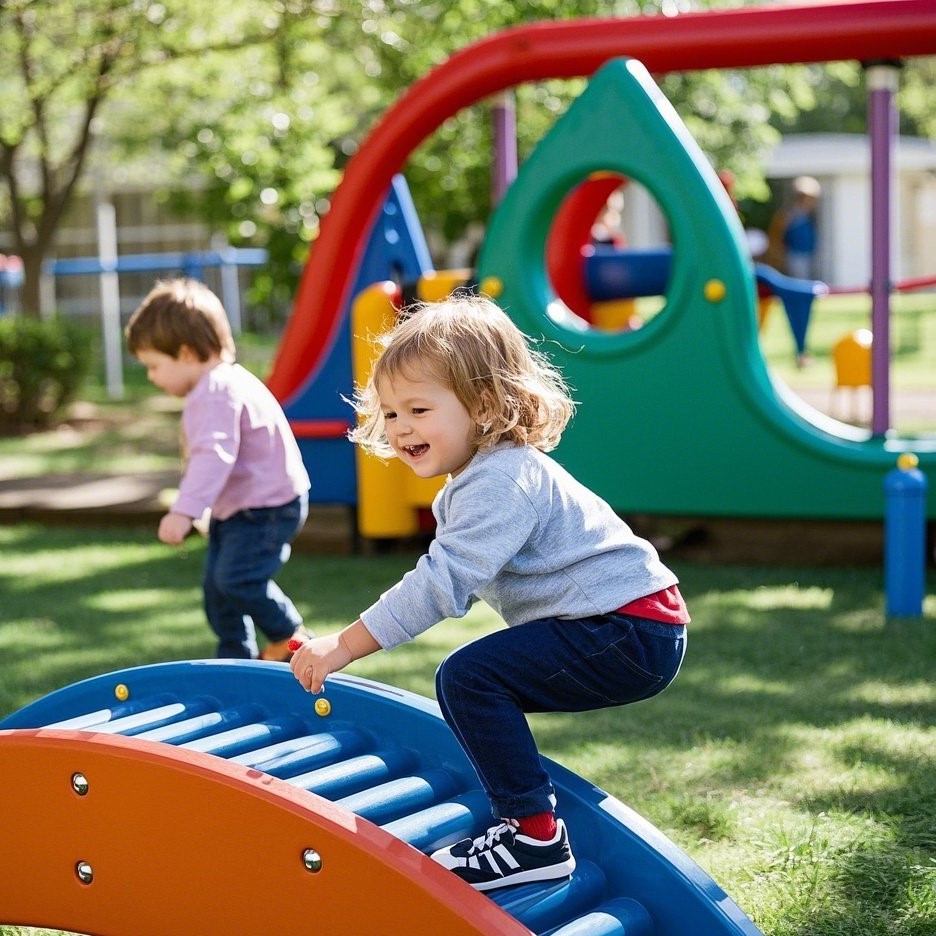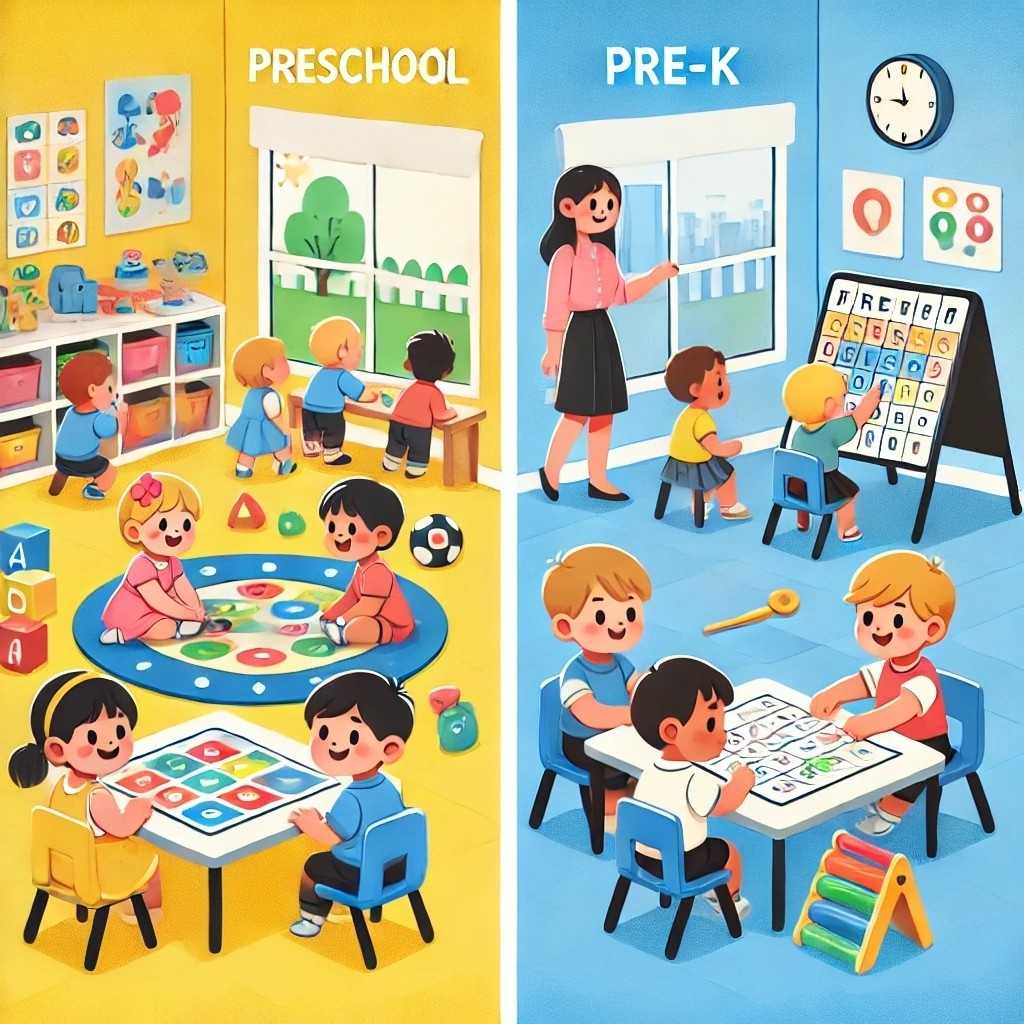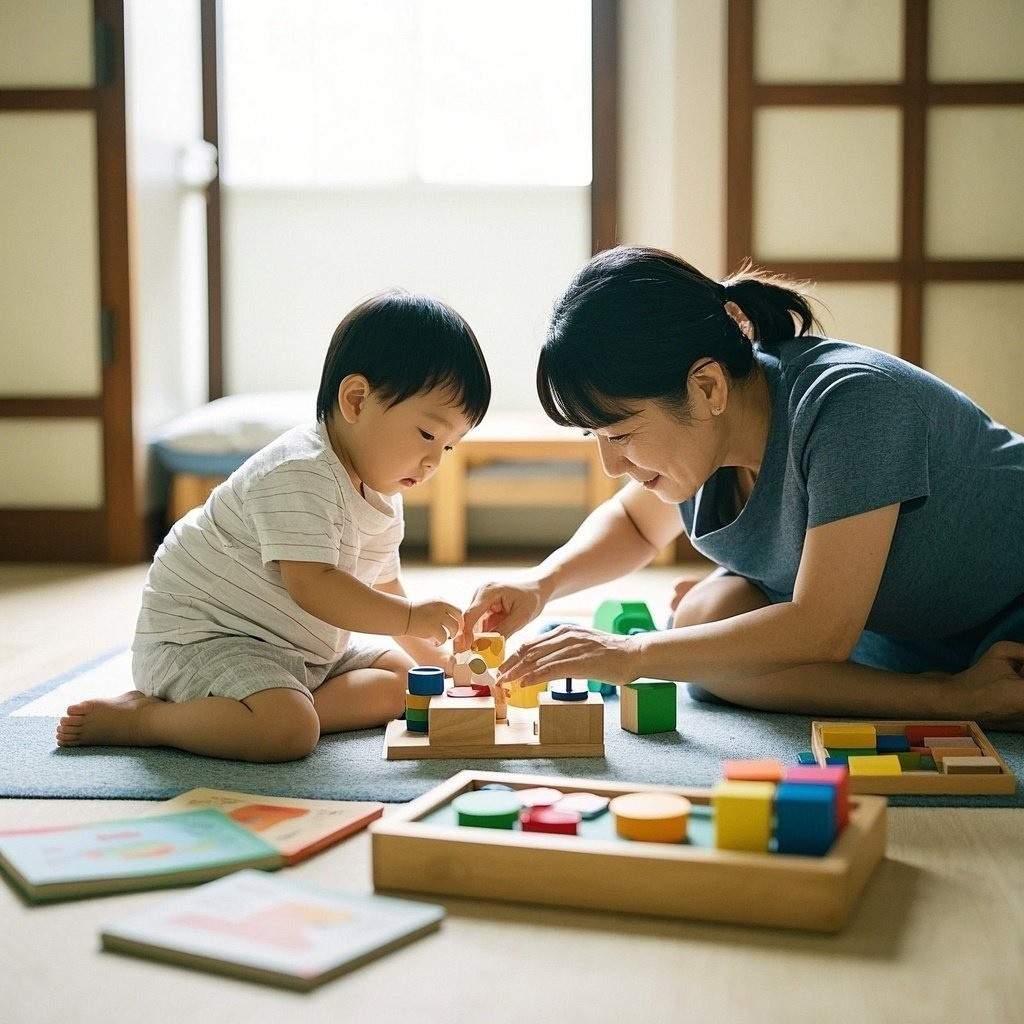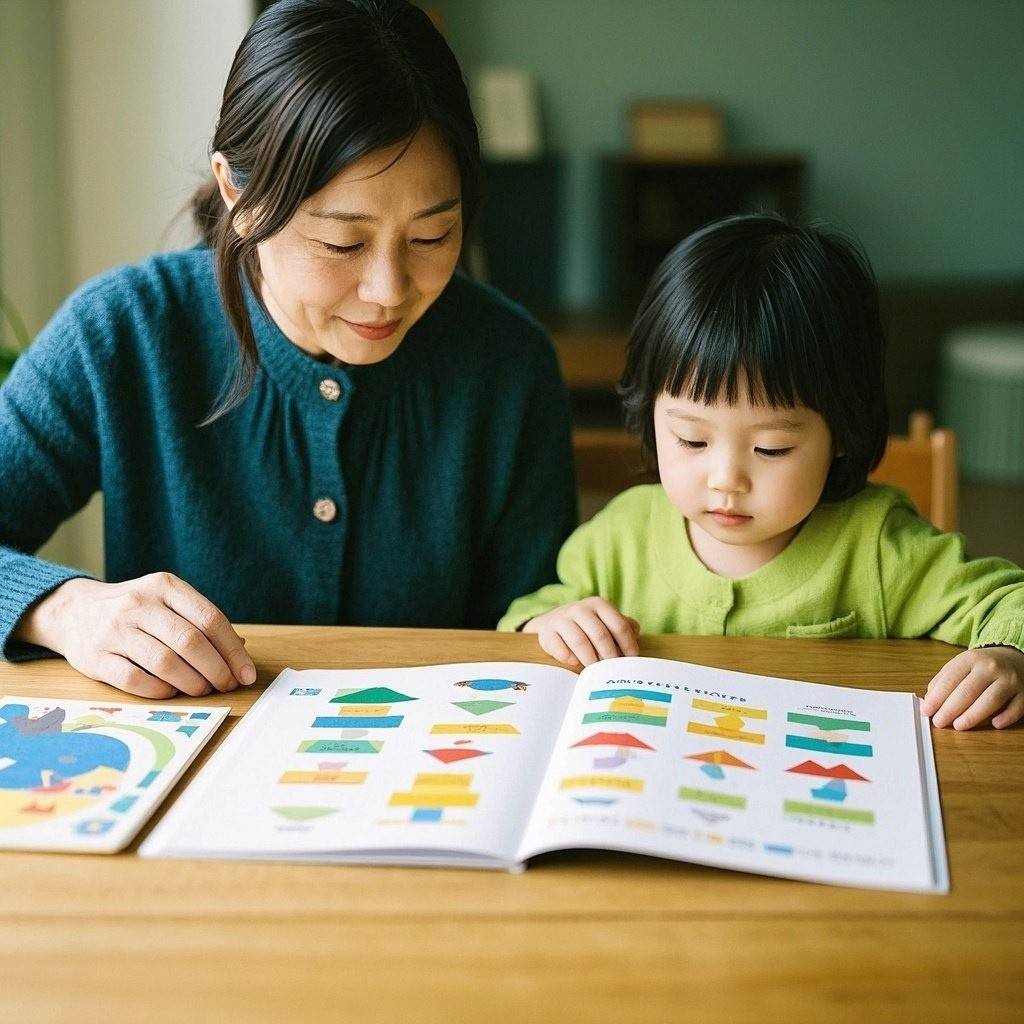In the early years of life, children experience rapid physical, cognitive, and emotional growth. One of the most vital—and often overlooked—aspects of early development is the integration of sensory and motor skills. These foundational skills are at the heart of how children explore the world, make sense of new experiences, and develop essential abilities for lifelong learning. Through sensory motor activities, children not only engage their bodies but also build stronger brains, better coordination, and deeper social connections.
Let’s explore what sensory motor skills are and why they play such a pivotal role in early childhood development.
What Are Sensory Motor Skills?
Sensory motor skills refer to a child’s ability to take in information through their senses—sight, sound, touch, taste, and smell—and use it to guide physical actions. These skills involve both sensory processing (how the brain interprets sensory input) and motor responses (how the body moves in response to that input).
There are two primary types of motor skills:
- Gross motor skills involve large muscle groups used for actions like crawling, walking, jumping, and climbing.
- Fine motor skills involve smaller muscle movements such as grasping, writing, buttoning, and using utensils.
When sensory input and motor response work together effectively, children can perform everyday tasks more easily and confidently. These skills are crucial for functional independence and school readiness.

The Importance of Sensory Motor Skills in Early Development
During the early childhood years—especially between ages 1 to 6—children’s brains are developing rapidly, forming millions of neural connections each second. Sensory motor activities help reinforce these connections and lay the groundwork for more complex skills later on.
1. Brain Development and Neural Connections
Movement and sensory experiences stimulate different areas of the brain simultaneously. For example, when a toddler crawls across a soft carpet to reach a toy, their brain processes textures, visual distance, balance, and coordination. These multisensory inputs strengthen synaptic connections, which are essential for learning and memory.
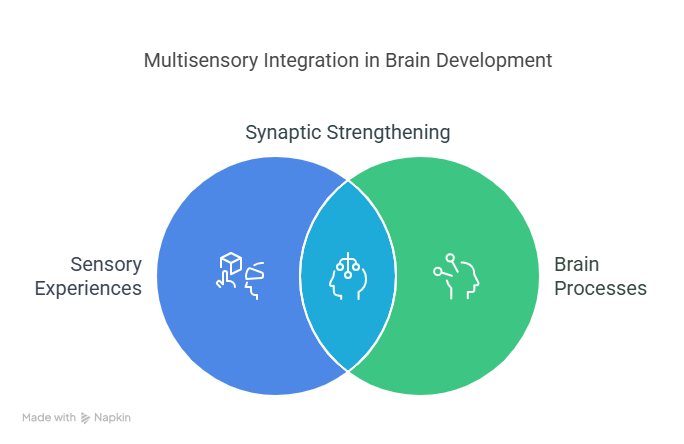
2. Building Body Awareness and Coordination
Children begin to understand where their bodies are in space—a concept known as proprioception —through sensory motor exploration. Activities that involve climbing, balancing, or moving through space help develop this sense, leading to improved coordination and agility.
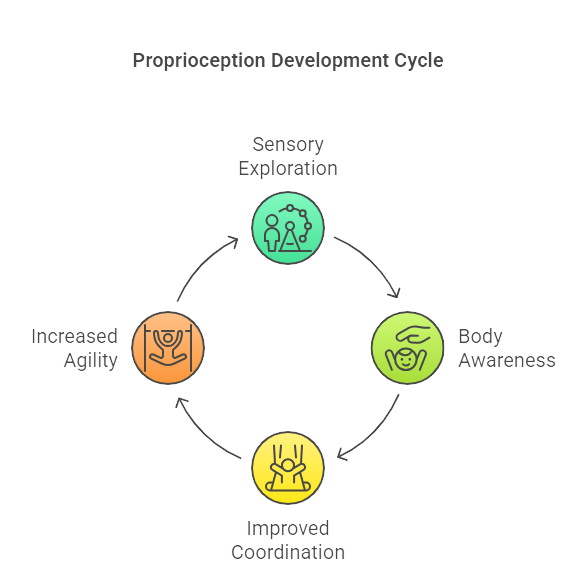
3. Enhancing Cognitive Processing
Sensory motor tasks often require children to problem-solve, adapt to new challenges, and make decisions in real-time. This boosts executive function skills, including working memory, attention control, and flexible thinking.
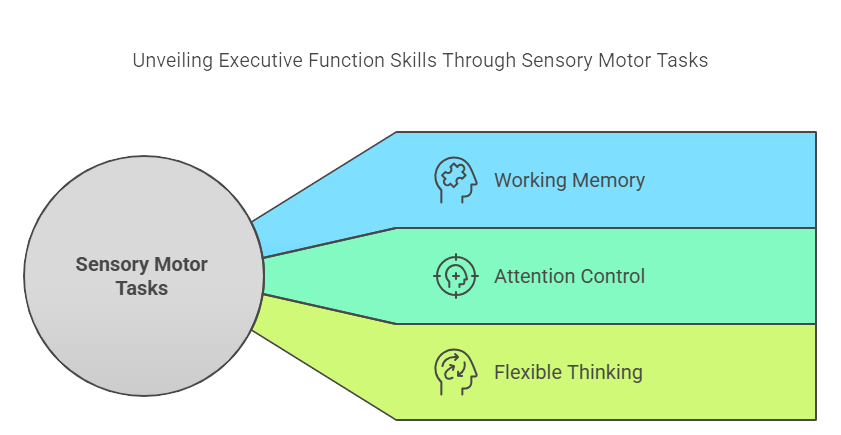
4. Supporting Emotional Regulation
Physical movement and tactile input can help children regulate their emotions. For example, swinging, squeezing a stress ball, or jumping on a trampoline can help a child feel calmer and more focused. These self-regulation strategies are especially helpful for children with sensory sensitivities or attention disorders.
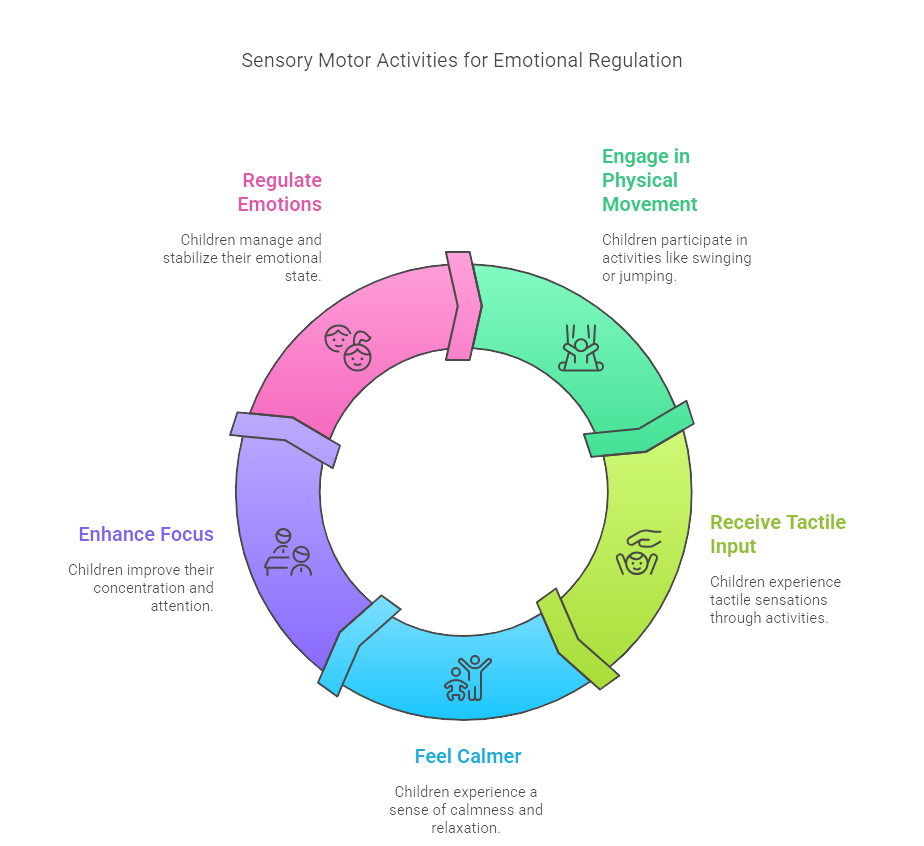
5. Preparing for Academic Readiness
Before children can write, they need to strengthen their fine motor skills through actions like pinching, grasping, and manipulating objects. Likewise, balance and core strength, developed through gross motor activities, are crucial for sitting upright and paying attention in class.
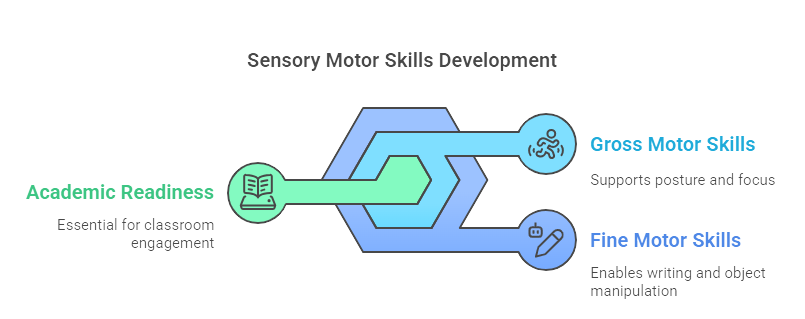
Key Benefits of Sensory Motor Activities
Integrating sensory motor play into daily routines has far-reaching benefits for child development :
- Improvements: Activities like yoga, hopping, and skipping help children control their bodies and maintain stability.
- Boosts fine and gross motor coordination : From cutting paper to riding a tricycle, these skills are essential for school and self-care.
- Encourages creativity and problem-solving : Open-ended play lets children explore different outcomes and take initiative.
- Builds social skills : Group activities teach turn-taking, cooperation, and empathy.
- Increases confidence : Mastering new physical tasks empowers children and boosts self-esteem.
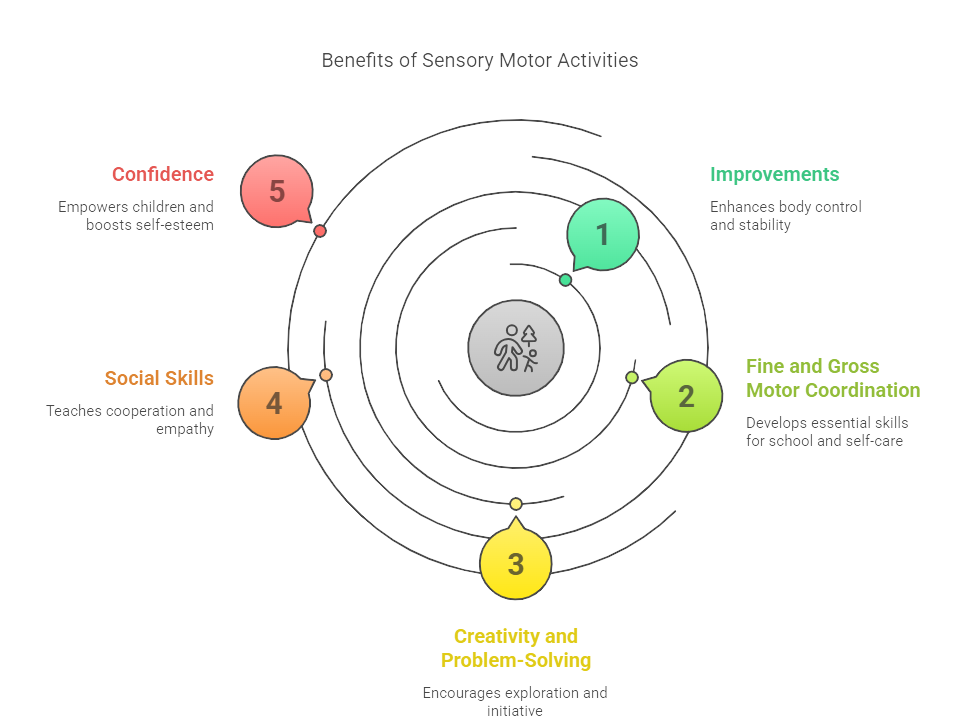
Examples of Effective Sensory Motor Activities
You don’t need fancy equipment to help children develop sensory motor skills. Many effective activities use simple materials and settings:
1. Obstacle Courses
Create paths with pillows, cones, tunnels, and balance beams. Crawling, jumping, and maneuvering through an obstacle course builds both gross motor strength and body awareness.
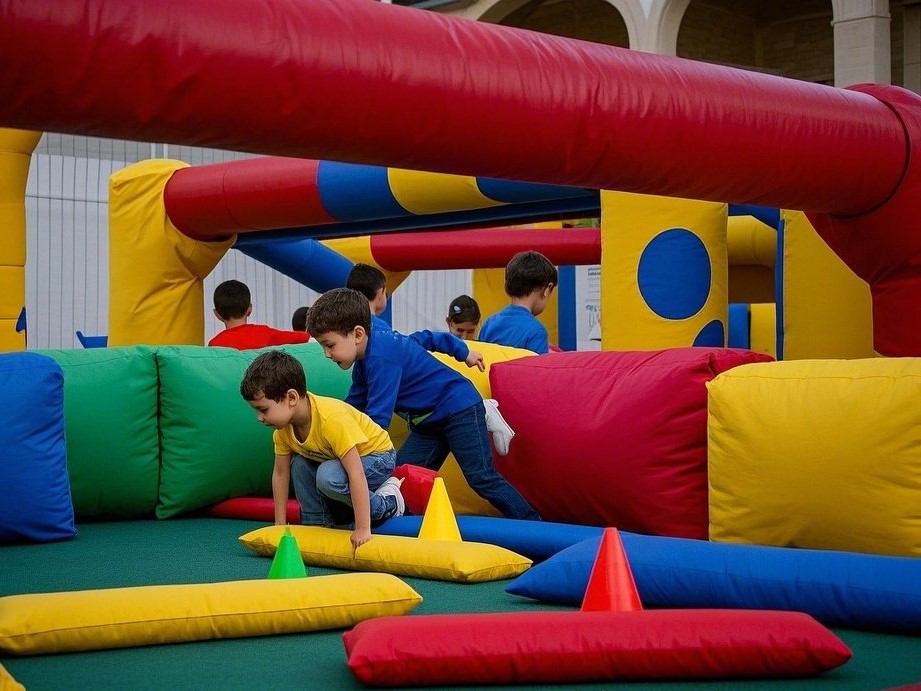
2. Playdough, Cutting, and Lacing
These fine motor skill activities strengthen hand muscles and improve coordination. They’re great precursors to writing and drawing.
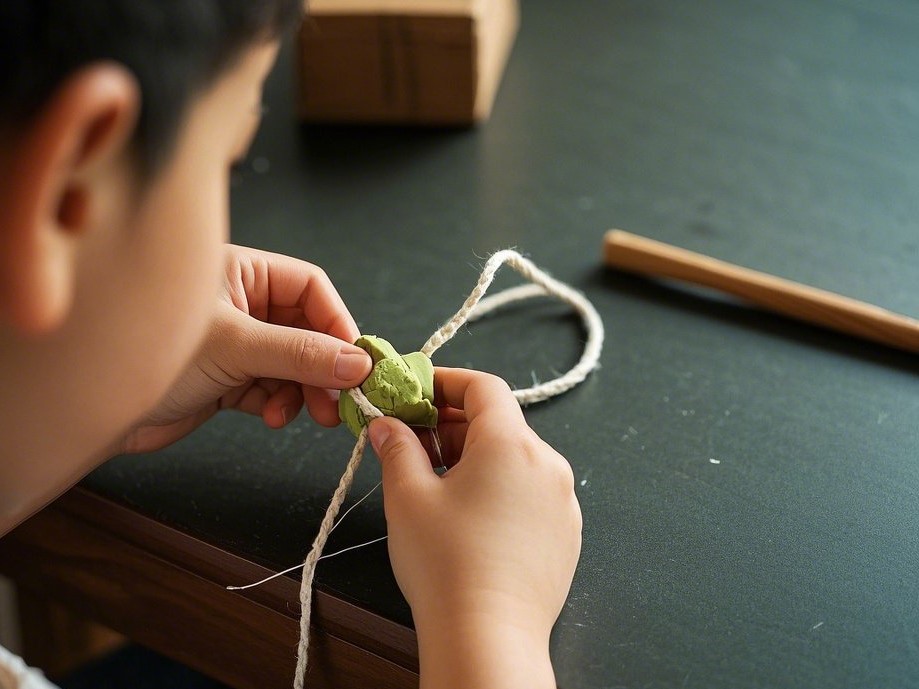
3. Dancing and Movement Games
Games like “Simon Says” or musical freeze dance improve listening skills, rhythm, and coordination while engaging auditory and kinesthetic senses.
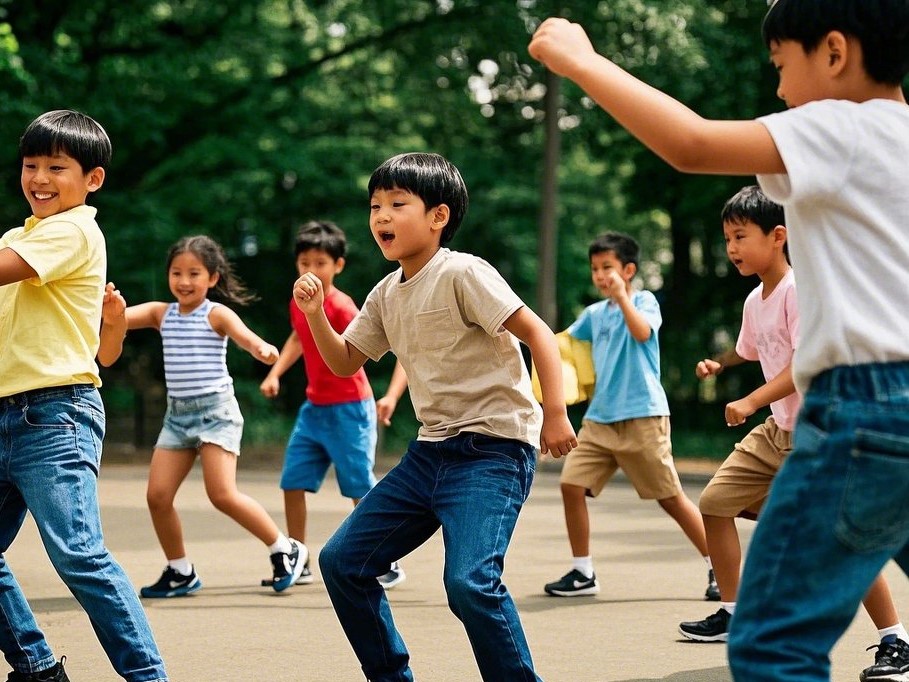
4. Sand and Water Play
Scooping, pouring, and sifting are rich in tactile input and help children experiment with concepts like volume and texture.

5. Nature Exploration
Walks in the park or playing in the backyard provide sensory stimulation through sounds, smells, and natural textures.

6. Swings, Slides, and Climbing
These playground favorites engage the vestibular system , helping children build balance and spatial orientation.
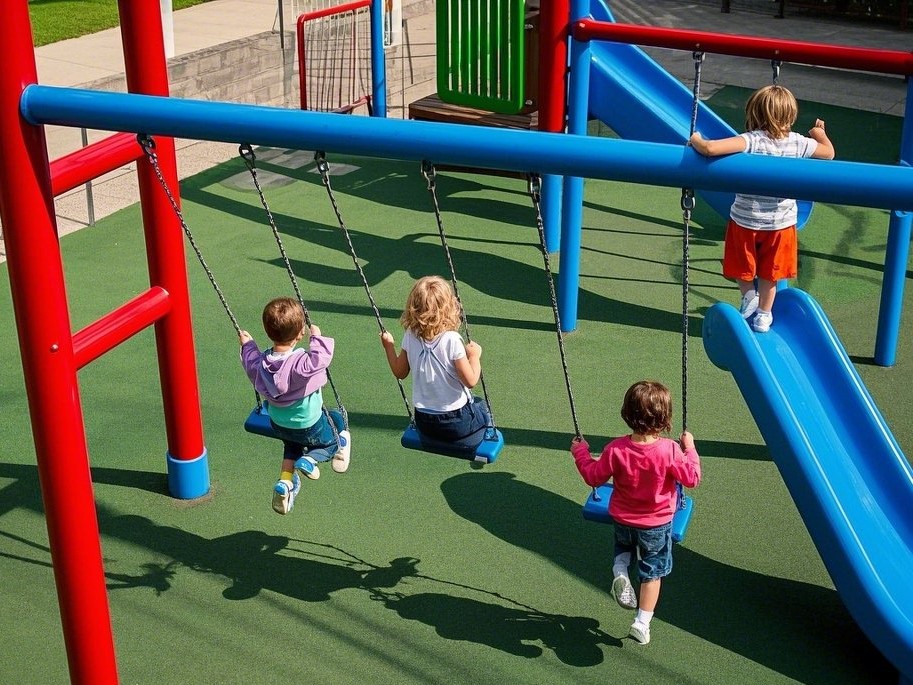
Incorporating Sensory Motor Activities at Home or School
Supporting sensory motor development doesn’t require a specialized curriculum—just intentional, playful interaction.
- Create sensory-friendly zones : Dedicate a corner with mats, fidgets, or textured toys where children can explore freely.
- Use everyday items : Muffin tins, tongs, rice bins, and sponges can become tools for creative play.
- Build routine into the day : Schedule active time between meals, transitions, or story time to help children stay engaged.
- Adapt activities by age : Toddlers may enjoy stacking blocks, while preschoolers can try threading beads or tossing beanbags.
Even 15–30 minutes of motor skills activities each day can make a big difference in a child’s overall development.
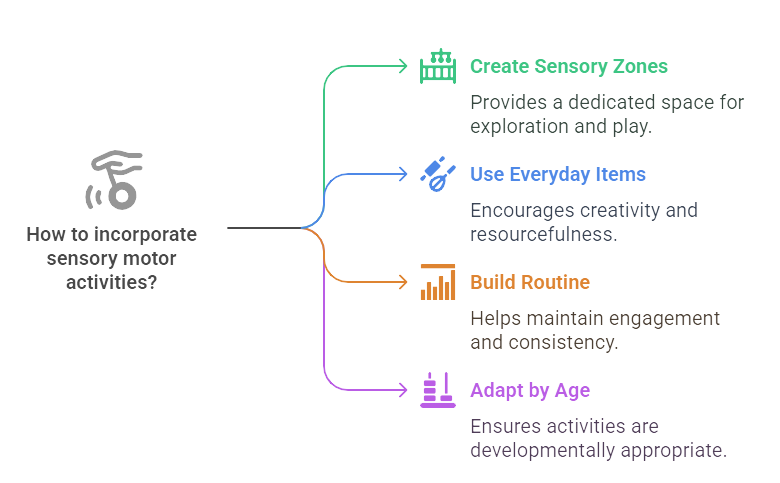
Supporting Children with Sensory Integration Challenges
Some children struggle with how their brains interpret sensory input. These children may be overly sensitive (hypersensitive) or under-responsive (hyposensitive) to things like sound, light, touch, or movement.
Common signs include:
- Difficulty sitting still or paying attention
- Avoidance of textures, tags, or certain clothes
- Seeking constant motion or pressure
- Strong emotional reactions to loud sounds
Supportive strategies include:
- Creating predictable routines and calm transitions
- Providing sensory tools like weighted blankets or noise-canceling headphones
- Offering structured movement breaks
- Consulting with an occupational therapist for personalized interventions
With the right support, all children can benefit from the power of sensory motor play.
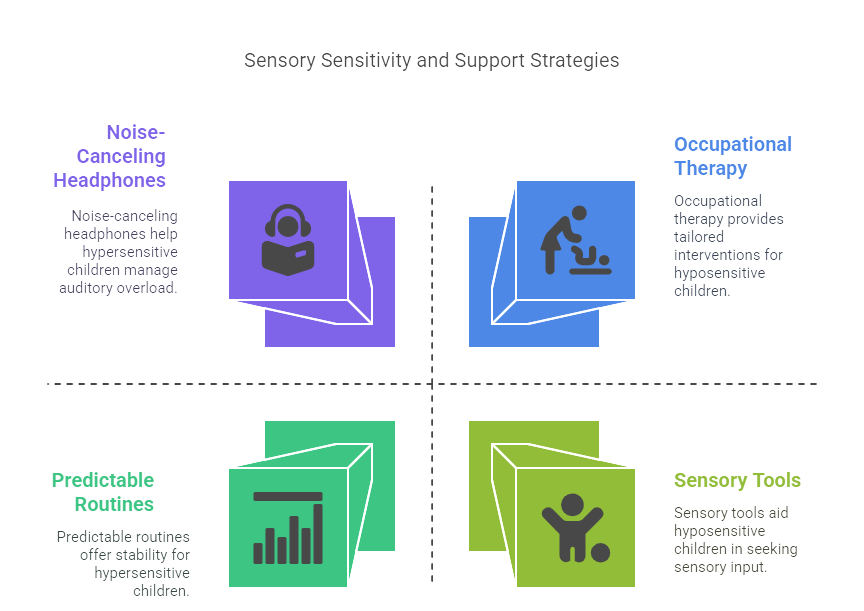
Conclusion
In the journey of early childhood growth, sensory motor skills activities are not just a bonus—they’re a necessity. These experiences strengthen the body and brain, laying the foundation for confidence, learning, and emotional well-being.
By encouraging children to move, touch, balance, and explore, parents and educators provide the tools needed for a lifetime of healthy development. From the playground to the living room floor, every tumble, stretch, and squeeze matters.
So, the next time your child is jumping in puddles, climbing the jungle gym, or playing with finger paints, remember: they’re not just having fun—they’re building a better brain.

